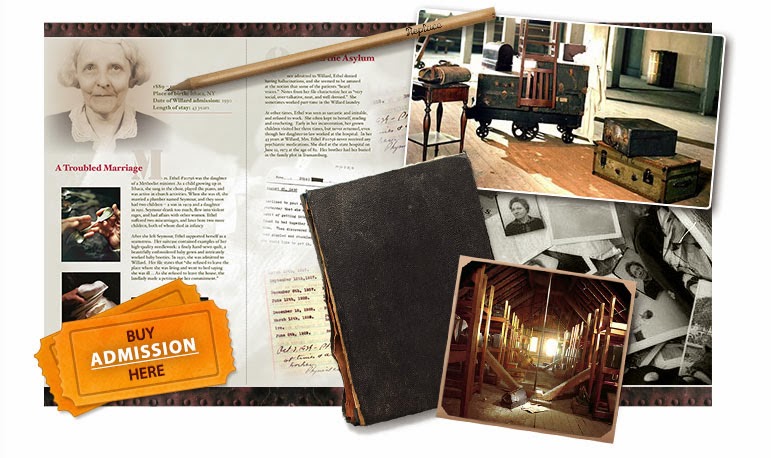 |
| The Lives They Left Behind: Suitcases From A State Hospital Attic at the Museum of disABILITY History, Buffalo, NY. |
Last Friday evening I attended the grand opening of The
Lives They Left Behind: Suitcases From A State Hospital Attic at
the Museum of disABILITY
History in Buffalo, New York. After 126 years of operation as a
state mental health hospital in Upstate New York, the Willard Psychiatric Center closed its doors
in 1995. The discovery of over 400 suitcases and trunks in the attic have
provided unprecedented insight into the lives of mental health
patients in the early twentieth century. The exhibit is based on the book of the same title by Darby
Penney and Peter Stastny. I highly recommend both.
Haunting, riveting, and heartbreaking, seem insufficient words to describe the stories told through the
contents of baggage left behind in the attic of the
Willard Psychiatric Center. It did not come as a surprise that
most of the suitcase owners were admitted to the facility against their will.
The revelations lay in the lives they had before that
fateful day. Some of the patients came from well to do families, some from the
military, and some were just hard working folks. Photos and other mementos found among their belongings indicated good times with loved ones,
talents and skills that were abandoned with their luggage upon admission, and
important vocations that involved helping others or serving their country.
Case files reported
many reasons for commitment to the Willard Asylum, like anger management and mild paranoia. Often patient interviews were not indicative of serious mental illness by modern standards, although the diagnosis dementia praecox, later called schizophrenia, was used often. Patient records told of personal
tragedies in the past that were not considered in the diagnosis or treatment of
the individuals being evaluated. Their physical ailments were often
dismissed as hypochondria and their emotional needs were simply not considered.
 |
| The Lives They Left Behind: Suitcases From A State Hospital Attic at the Museum of disABILITY History, Buffalo, NY. |
Many of the suitcase
owners lived out the remaining decades of their lives at the hospital, subject
to what we now deem appalling treatment. Some patients accepted
their fate without question, others argued tirelessly for their release.
A few managed to carve out a niche for themselves, or maintained
contact with friends and family outside of the hospital. However, when
they passed, many were completely forgotten. If it were not for the
objects they left behind in that dusty attic, we would never have known who
they were before they became patients.
No comments:
Post a Comment